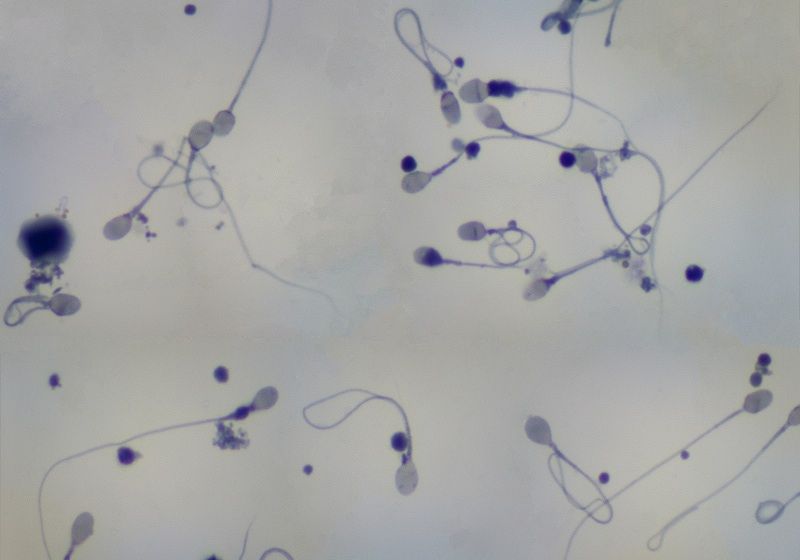3D Video of Swimming Sperm May Aid IVF

A method for taking 3D movies of live sperm could help fertility clinics select the most viable cells for in vitro fertilization (IVF).
Sperm motility is an important predictor of IVF success. The new technique captures the wiggly movement and behavior of sperm in a real-time videoand lets scientists sort the cells to identify defective sperm.
Using the new technique, "we can observe how the sperm move and determine if that movement is affected by any abnormalities in their shape and structure," Giuseppe Di Caprio of the Institute for Microelectronics and Microsystems of the National Research Council in Italy and Harvard University in Cambridge, Mass., said in a statement. Di Caprio led the team that developed the new technique, detailed Tuesday (Feb. 11) in the journal Biomedical Optics Express. [See 3D Movie of Living Sperm]
Doctors most commonly measure sperm concentration and mobility by visual inspection or by a process called computer-assisted sperm analysis (CASA). Although CASA is less subjective than visual inspection, it can track sperm only in 2D.
To develop the new 3D sperm-tracking method, Di Caprio and his team split laser light into two beams, aiming one beam at a dish of live sperm and magnifying it in a microscope. They combined that beam with the second beam, producing an interference pattern. A camera recorded the pattern, creating a hologram.
"Viewing a progressive series of these holograms in a real-time video, we can observe how the sperm move and determine if that movement is affected by any abnormalities in their shape and structure," Di Caprio said.
The new imaging method, known as digital holographic microscopy (DHM), provides a glimpse of the sperm's physiology and movement, allowing researchers to detect abnormalities that could interfere with fertilization, such as a bent tail that hinders the sperm's swimming.
Sign up for the Live Science daily newsletter now
Get the world’s most fascinating discoveries delivered straight to your inbox.
The sperm structure and motility resembled that seen in previous studies, but the new technique goes further, allowing scientists to determine how a sperm's structure affects its motility. For example, most healthy sperm swim in a geometric plane, but the new 3D method showed that sperm with bent tails don't swim in a plane.
The next step is using the tracking technique to choose the best-quality sperm for IVF. The researchers want to study sperm cells that have compartments filled with water and other molecules known as vacuoles on their surfaces, to determine if these cells are less fertile.
In the long run, Di Caprio and others hope to develop a microchip-scale sperm method for sorting sperm by viability.
Follow Tanya Lewis on Twitter and Google+. Follow us @livescience, Facebook & Google+. Original article on Live Science.












